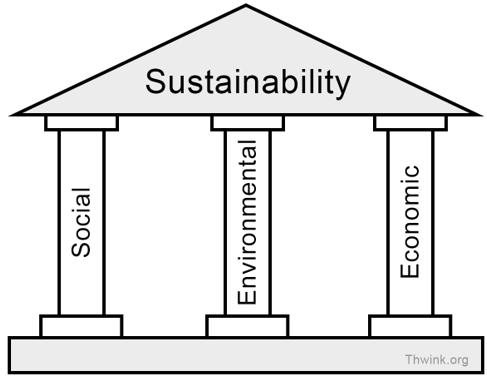Understanding Sustainability in the Digital Age of Farming
Sustainability has been a focus for agriculture for years, but what does it mean? When looking for a solid definition of sustainability, it can become difficult to understand exactly what it means specifically for farm operations, and how to identify where we currently are to where we are going in the future.
- “Sustainable agricultural practices are intended to protect the environment, expand the Earth’s natural resource base, and maintain and improve soil fertility.” — USDA National Institute of Food and Agriculture
- “The goal of sustainable agriculture is to meet society’s food and textile needs in the present without compromising the ability of future generations to meet their own needs.” — UC Davis Agricultural Sustainability Institute
- “In agriculture, sustainability is a complex idea with many facets, including the economic (a sustainable farm should be a profitable business that contributes to a robust economy), the social (it should deal fairly with its workers and have a mutually beneficial relationship with the surrounding community), and the environmental.” — Union of Concerned Scientists
With so many definitions, it can become confusing to understand what sustainability means at the farm scale, but also how technology and data can fit into the larger mission. Initially when I think of the word, I think of farms that have been around for over a hundred years, changing with the times and technology that makes them viable and successful to today. We often now see large companies discussing their missions and sustainable development goals (SDGs) that relate to processes of product creation, or the sourcing of materials and commodities that go into the products from food or fiber we use everyday. What has become interesting with the increase of digital technology in agriculture, is the ability to more readily and easily connect the dots to previously hard to classify, quantify, or link information creating easier transparency in the supply chain for those sustainability goals while providing opportunities to enhance profitability on farm and continue that legacy that many have today, many times made possible by digital technology.
The precision age of agriculture, which we are still in, has allowed us to collect, create, and repeat data operations, while our growing digital age allows us to connect the dots of that information and begin to inform and make decisions upon it. The precision age technology included GPS, georeferencing, and data collection tools such as yield monitors that has made data collection, repetition, and aggregation possible. Once we had created and repeatable data, our understanding of how environmental, cultural, and agronomic practices interacted and related to outcomes became more available and we were able to understand more about the crops we produced.
While the digital age has grown, especially with advancements in technology, we are now able to make use of this data towards larger goals, and sustainability is one key area that the data breadcrumbs make sense, especially to consumers. Farms now have the datasets and availability where ideas such as applying benchmarking, machine learning, IoT, and blockchain to influence decisions can change the outcome of crops on the farm and the opportunity of where they eventually go off farm into the hands of consumers across multiple products we consume.
MORE BY SCOTT SPECK

The pillars of sustainability. Source: Thwink.org
These decisions from technology range from operational tasks, agronomic recommendations, and societal impacts. Interestingly enough, these farm level decisions using technology do link up with the pillars of sustainability — a foundation of decision making. The pillars of sustainability have been defined for looking at complete sustainability and the circular effects of interacting with the pillars. Having connected farm data digitally enables the farm to provide transparency across the operation, helping tell the story of agriculture and take advantage of possible markets and premiums that were otherwise more difficult to get access to, as a growing demand occurs. Below, we take a look at how each of the pillars of sustainability are “supercharged” by going digital in agriculture. Digital allows us to make more informed decisions, but to weigh them against sustainability and the collaboration to other missions in the supply chain has to have overlap and the decisions made should reach an overlap of the economic, environmental, and societal pillars.
Pillars of Sustainability
Economic
In agriculture, doing things sustainably doesn’t mean sacrificing profitability or stability on an operation. These pillars have to intersect with each other to create full sustainability and transparency along the supply chain. Many farms have been in business for decades or even hundreds of years, and when looking at the evolution of practices and decisions over time, these evolutions have enabled farms to become and stay profitable through practices that also overlap with environmental and societal impacts. Moving inputs to where they are needed, creating maps and records to understand, and using practices to change the way we manage operations have created economic benefit across the farm enhancing production but more importantly profitability.
Environmental
Environmental sustainability is often synonymous with conservation practices and how human decisions impact the environmental outcomes we see. Digital agriculture allows us to understand those breadcrumbs of data and how our decisions each year impact the farm profitability, but also economic downstream impacts. With better records and research we now understand and have the capability to change the 4R’s of nutrient and input management and can use field-centric information on applications that impact our environment like fertilizer or chemical. Data makes us more confident in these practices, and enhances our ability to apply products safely while maximizing resources for years to come. In my time in agriculture, I’ve seen technology in irrigation move from flood, to center pivot, and then technology taking grasp to make the decisions of when to irrigate, creating huge efficiencies in a short amount of time that previously we didn’t have the ability to understand. Advances in technology and adoption at the farm level creates huge environmental benefits in examples like this, but at the forefront at the farm create profit opportunities — a win-win scenario.
Societal
The societal pillar is one that we continue to hear more about in agriculture, as consumers are becoming more aware of and interested in their food production, in some cases just by words that have been marketed to them. The societal impact is one that most generally gets involvement quickly in the sustainability discussion, focusing on specific buzz words like glyphosate-free, organic, non-GMO — when sustainability in reality doesn’t have to mean “science free”. These are viable options where demand is current, but sustainability doesn’t disappear if we aren’t producing these types of crops. Crops grown with better water management practices or precise nutrients needed for growth are also extremely sustainable, and don’t have to fall into one of the buzzwords to be sustainable or find environmental and economic benefits. As it now has become easier than ever to connect to the purchasers of our products, this opportunity to tell the story of sustainability from the farm to the table is a huge opportunity in the definition consumers accept for the future.
Sustainability often gets a bad rap on the farm in that it is associated with a loss of profit or production on the farm, but that is far from the truth in many scenarios related to sustainability. Most farms today already are using technology that would qualify across the pillars as “sustainable” without knowing it, and in ways that consumers would be blown away by. Decisions we make on the farm that are already being implemented are sustainable in many pillar definitions, and data enables opportunity here. Digital technology has allowed farms to be able to link their decisions to the supply chain more readily for profit opportunities, but also has allowed transparency in deciding what to do that influences the three pillars for long term. Telling the story of agriculture and defining true sustainability for years to come is a huge opportunity presently for agriculture.
If you are a large corporation using grains to create a food product, for example, and looking to reduce water use by 10% over 5 years, doesn’t it make sense to start with grain grown with lower water use through the use of irrigation technology? How do you know that the sourced grain has a lower water use or footprint than other? The answer is the data, and that answer often comes with a premium to the producer in many cases. In this situation, the three pillars of sustainability can easily be met just by the use of technology and connecting those digital dots.
- Economically, the farm gains on profitability by receiving a premium for the grain they were producing, while environmentally utilizing fewer water resources for the same grain others in their area may be producing, and already with technology they have on the farm!
- On a societal basis, this helps grow our story that we are using resources as efficiently as possible, while helping the corporation meet their goals that consumers are looking for in a product. Digital records easily make this happen, where in years prior this was a much more difficult transaction to complete and verify across the sourcing chain.
What is great about this digital age is that we do have the ability to easily connect these dots if desired at the farm level to larger initiatives and goals that organizations sourcing crop products are looking for. Instead of having a filled-out paper report, actual field data can be linked in a report connecting both field spatial results and final decision numbers into larger datasets or models if desired. Many times, this digital trail of breadcrumbs offers opportunity or premiums on crops that can be paid to the farm, many times for things that are already occurring on the farm — and technologies even deeper like blockchain create even more ledger stability. The opportunity is endless — not only for premium markets but for identifying quick movements in the supply chain, which we have seen lately with COVID-19. Sustainability goals can be part of a larger picture in agriculture, and data will be at the heart of growing our world in the future. There are tons of opportunities in the space for digital to take a role in helping tell the story, and we are just getting started.










